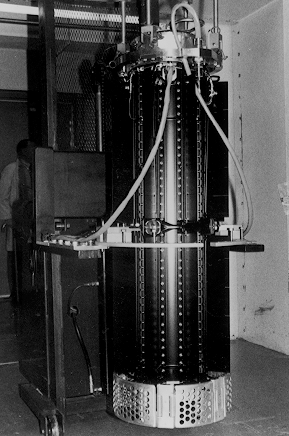Background
Martian TerrainVehicle
Lunar Rover
Size and CompositionCommunication and Navigation
Suspension
Wheels
Steering/Brakes
Power
Modular Trailer System
 |
||
|
Galileo Radioisotope
Thermoelectric Generator
Courtesy of NASA |
The vehicle will be powered with a combination of a batter and a Radioisotope Thermoelectric Generator, or RTG. An RTG produces energy continuously through nuclear decay. Despite its ominous name, the RTG process is conrtolled and safe for the astronauts. When this energy is not being consumed by the vehicle it will be stored in batteries to provide emergency and/or supplementary power. Excess RTG energy also can be used to charge the batteries at the main habitat in case of extreme power demands. The standard RTG uses in a spacecraft today weighs about 56kg, has a length of about 1.13m, and has a diameter of .43m. Loaded with 10.9kg of plutonium dioxide fuel, it can produce 888 W of electrical energy and 13,000 W of heat. Our vehicle will carry 3 RTG units that are slightly modified from the standard design to supply more power and to fit in the space available. They will carry 12kg of fuel each and be slightly shorter (just over 1 meter) and narrower.
We considered alternative power sources but decided against them for various reasons. Solar power was eliminated because it would require cell arrays with large surface areas and, in any case, it might be relatively unreliable during severe dust storms. Fuel cells were also investigated but deemed less practical for the long-duration mission. Battery-only power is not practical because of the limits it places on the range of the vehicle.
References